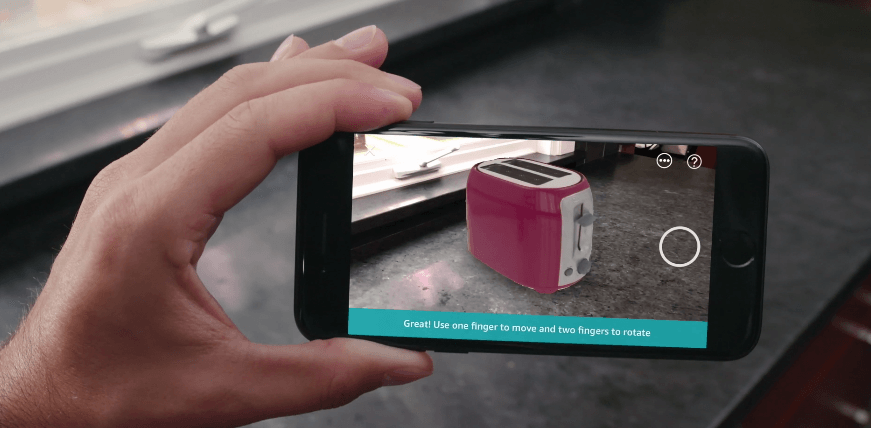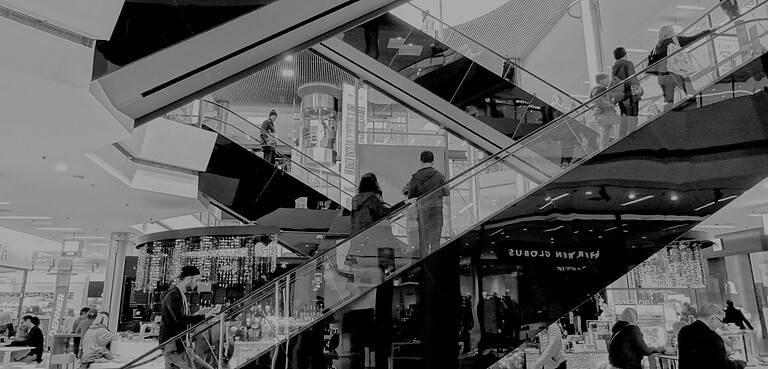Ecommerce changed significantly in 2018, and 2019 is set to see more developments and changes that makes it simpler, quicker and more efficient for consumers.
This,
So what can we predict to change in 2019 for ecommerce, and what trends do we expect to emerge or continue to evolve?

Online & Offline Blurring
Online and offline experiences will become more seamless. Whether that is offering certain ecommerce-specific experiences in-store as well, or offering interactive shopping events that hope to give extra reasons to shop in-store.
While town centres are dying and more people are price comparing and shopping online, more retailers are experimenting with how they can make the most of their physical presence.
Creating experiences that engage or attract online audiences can help retailers keep their physical locations relevant and busy. Otherwise, giving customers a reason to shop in-store or will certain chains will become more important.
John Lewis customer service and extra-long warranties, for instance, make them a go-to place for shoppers looking for
Argos has survived largely due to click-and-collect, and more retailers are offering Amazon or other ecommerce collections in otherwise irrelevant stores (such as Currys/PC World).
On top of this, in an online world, sometimes photos aren’t enough. 360 degree images or videos can really help customers see what they are purchasing, and mimics holding it in their hands. This provides a much higher quality of engagement, as they can move it around and inspect elements. This removes any doubts they may have that a normal photo might try to hide.
Mobile-first
More ecommerce retailers are going for a mobile-first approach. The public
In the past, while people may research on their phone, they may convert on a laptop. This is no longer the case.
Tablets have taken a hit, as phones have gotten better and bigger, so a mobile-first approach has become a huge focus for retailers.
Omnichannel shopping
On top of this, omnichannel shopping is more common. Google states that 85% of customers start a purchase on one device and finish on another.
Creating a seamless transition from mobile, tablets, desktops, phone calls, in-store experiences and otherwise can help conversion rates.
This means retailers and ecommerce stores need to focus on multiple channels in order to ensure they capture the attention of their audience wherever they may hang out, and ensure the shopping experience is not hindered based on where they browse or how they wish to convert.
AR and VR
VR, or virtual reality, has been a bit of a buzzword for a few years now, but it is starting to become more mainstream.
AR, or augmented reality, is yet to really make a significant impact, but the popularity of apps such as Pokemon Go and otherwise have certainly opened up the eyes to the public on how they can interact with reality on their phones. AR is, instead of trying to mimic reality, is trying to lay virtual elements over reality. Think Google Glass elements added into your vision instead of Oculus VR headsets which cover everything and in order to trick your senses into seeing a different virtual reality.
IKEA has developed AR applications in order to see how products would look in your home. Amazon allows for similar augmented experiences to try out appliances or products within an app.

Other clothing brands allow you to place clothes upon yourself, and eyewear brands allow you to try out glasses or sunglasses on your own face. This gives customers far more confidence in ordering online. In the past, ordering glasses would be a very bold thing to do online, as you have no idea if they will suit you or even fit. And they can be a costly purchase. Generous returns and AR experiences can make a significant difference to sales in similar areas.
Google’s own smartphone camera also now allows you to identify products out of the box. So all you need to do is point a camera at something that takes your fancy, and Google will identify what it is, and where you can buy it. This brings another level of how-to SEO for product identification via images – as Google will likely pick certain phrases or keywords when identifying products.
Virtual assistants & Chatbots
The presence of virtual assistants on ecommerce sites helps to bring the offline experience onto screens.
Consumers still want, and are coming to expect, a level of assistance when shopping. Human assistants in store can be helpful, and live chat options can be a viable online alternative to answer queries. But virtual assistants can help answer certain queries or questions without having to man a specific live chat line.
Virtual assistants help make the purchase route quicker,
Virtual assistants or other chatbots can answer questions, discuss complaints, send links to certain help articles, or otherwise personalise an ecommerce experience.
While some shoppers may think that speaking to an AI is useless in comparison to speaking to a human, the fact they do not need to wait to speak to someone may be seen as a huge bonus. There’s nothing people hate more than waiting or queueing on a phone line or otherwise when they have an issue or complaint that needs to be dealt with.
Personalisation
Targeted and personalised messaging has become simpler than ever. If you have the correct tools in place (and the right budget) you can target incredibly specifically to get the best results.
Of course, there is a fine line to tread. You don’t want customers feeling you are watching their every move and targeting them when they don’t want to be targeted.
Whether the personalisation you choose is product recommendation, personalised email campaigns, personalised retargeting ads, personalised offers or otherwise – it can make a big difference to how likely someone is to convert. It’s worth considering what your audience will respond to.It is reported that Amazon gets 35% of its revenue from its recommendation engine.
Product customisation
Aside from personalised experiences, personalised products are more popular and widespread than ever.
This is one benefit that online ecommerce can offer over products in a store. Whether it is shoes, clothing, mugs, or any other form of
Environmentalism
While environmentalism has been a big thing for a while now, in recent years we have seen many more people getting on board with supporting brands and practices that minify the damage to the environment.
Whether this is brands supporting reducing plastic waste, reducing the impact of supply chains, or simply having a positive environmental or social impact, this thought is now more important to consumers. If you can do something similar to this compared to traditional brands – you are more likely to find a target audience that
We have seen many campaigns against plastic packaging (with brands offering bottles of water in cardboard packaging) and fast fashion (with brands such as Primark feeling the heat due to poor working conditions and what happens to the clothes once they quickly degrade and are thrown away).
Brands that are advocates for environmentalism are making big strides – and in helping the environment or other causes is good marketing in itself.
One particular trend (that is more of a social media trend than for ecommerce directly, but ecommerce/retail is the source) is that shoppers are buying clothes purely to upload photos to social media channels to get likes. But then they will either return the clothes or bin them later on. The clothes are not bought with consistent wearing in mind – but bought with the social posts and engagement it brings in mind. They may be worn a few times – but with the increasingly pressured nature of social media and keeping up with the latest trends, it encourages throwaway culture.
Barclaycard research shows that 9% of shoppers have bought clothes purely for photos for social media, and then return them. They found 35-44 year-olds are the worst for this, with almost 1 in 5 saying they have bought clothes to wear once for hashtag purposes. Men are more likely to be
While ASOS has long been a go-to place for younger clothes shoppers due to the very generous free returns and 1-day delivery options, the announcement it is clamping down on serial-returners will be interesting for other retailers to observe.
Social selling
More and more people are buying after seeing products on social media – and this experience is becoming more seamless, with fewer steps between seeing an item on social media and actually making the purchase.
GlobalWebIndex found that 49% of UK consumers now actively purchase through social platforms. 39% of respondents said they made a purchase via Facebook – but Instagram could be the next big thing as 1/4 of respondents say the preview functionality was better and would encourage them to make a purchase.
Whether this is on YouTube, Instagram or otherwise – there are plenty of new features that make identifying products, finding products and buying products directly from social channels much, much simpler.













